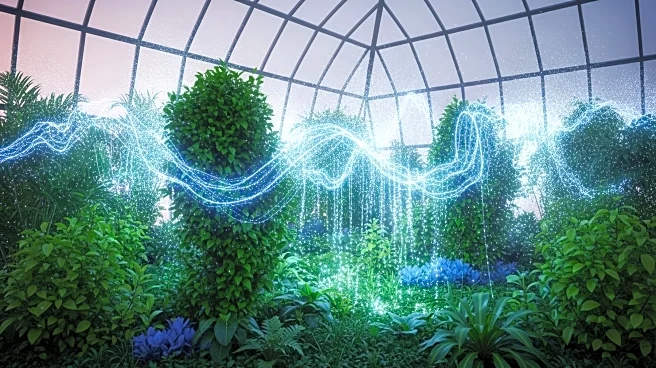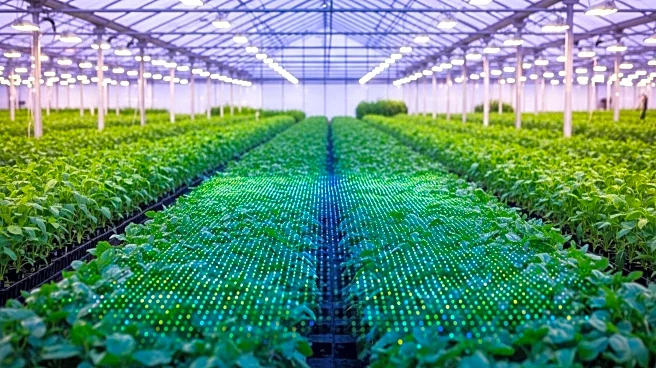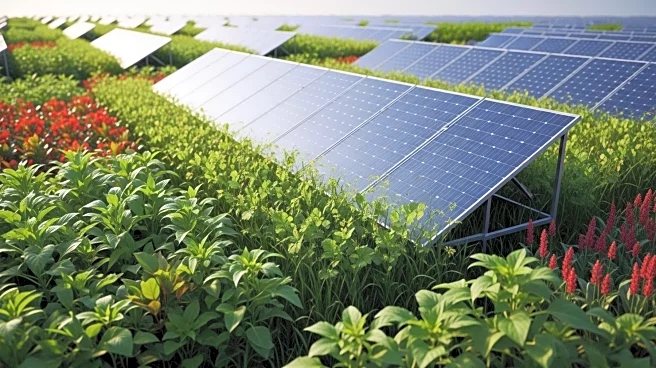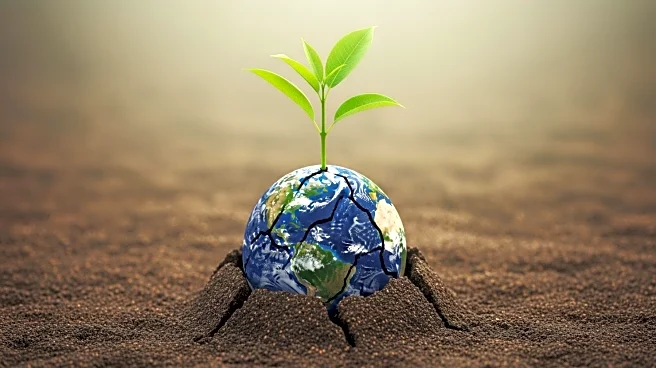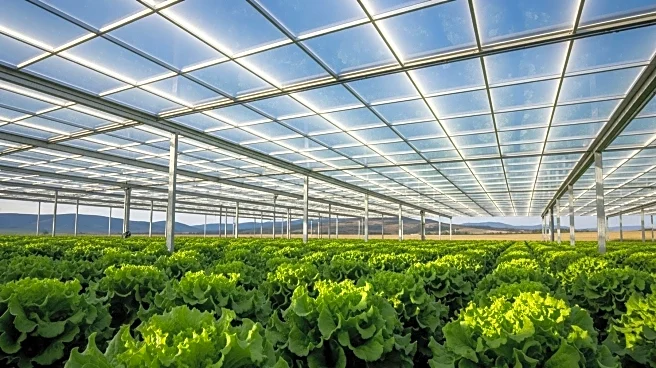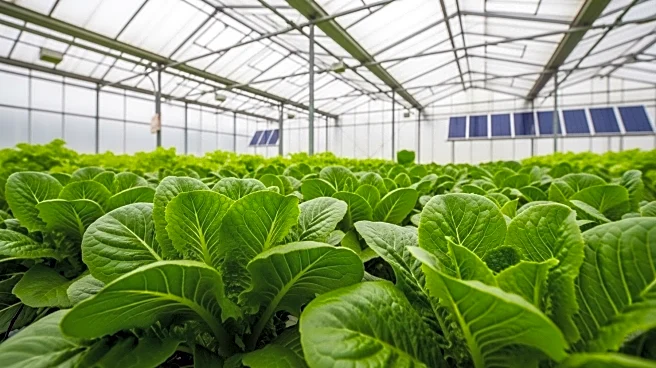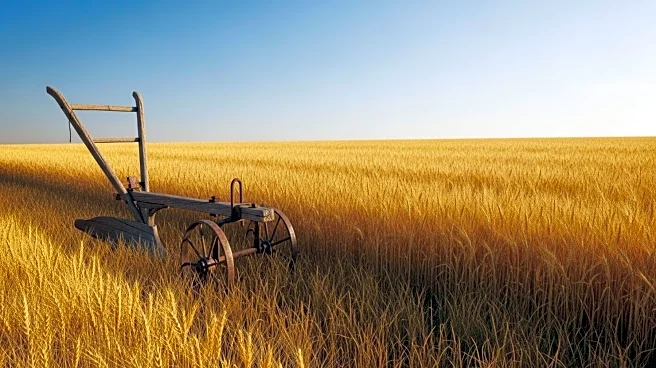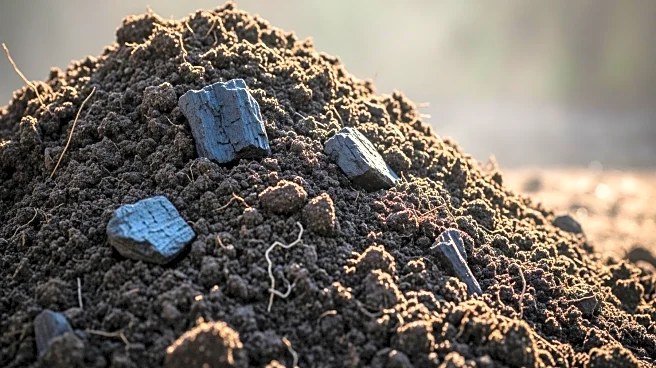What's Happening?
UbiQD has unveiled results from a USDA-funded study at the University of California, Davis, demonstrating the effectiveness of quantum dot (QD) laminated glass in enhancing greenhouse farming. The study compared two greenhouses, one with QD-glass and the other with standard glass, during a winter lettuce growing cycle. The QD-glass greenhouse showed a 37.8% increase in fresh biomass, with plants nearly 40% heavier, indicating a substantial rise in edible yield. The glass improved light-use efficiency by 41% and increased nutrient levels, enhancing crop nutritional quality. The technology optimizes light quality for growth without sacrificing photosynthetically active radiation.
Why It's Important?
The use of quantum dot glass in greenhouses represents a significant advancement in sustainable agriculture, offering a solution to challenges like climate change and resource scarcity. By improving crop growth and energy efficiency, this technology can enhance food production in colder or energy-limited regions. The innovation supports the development of climate-smart greenhouses, potentially transforming agricultural practices and contributing to global food security. The increased efficiency and yield can benefit farmers economically and environmentally, promoting sustainable farming practices.
What's Next?
The adoption of quantum dot glass in greenhouses could expand, with more farmers and agricultural businesses exploring its benefits. Continued research and development may lead to further improvements in the technology, making it more accessible and cost-effective. Stakeholders in the agricultural sector may consider integrating this technology into existing systems to boost productivity and sustainability.
Beyond the Headlines
The integration of quantum dot technology in agriculture raises questions about the long-term environmental impact and the potential for widespread adoption. Ethical considerations include ensuring equitable access to the technology and addressing any unintended consequences on ecosystems.

